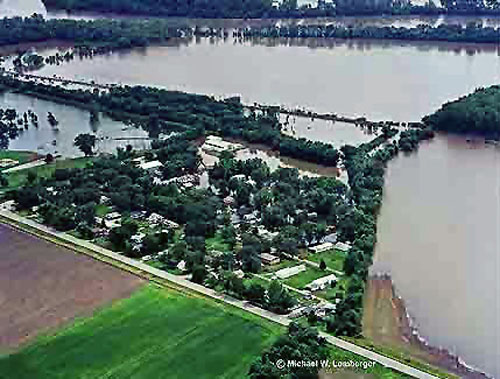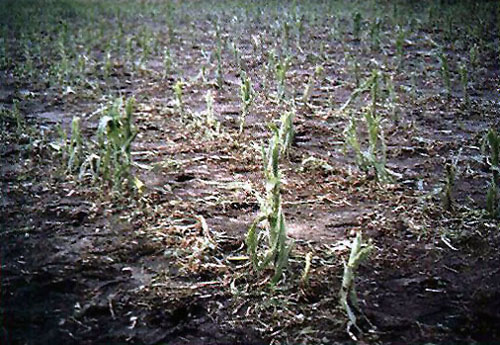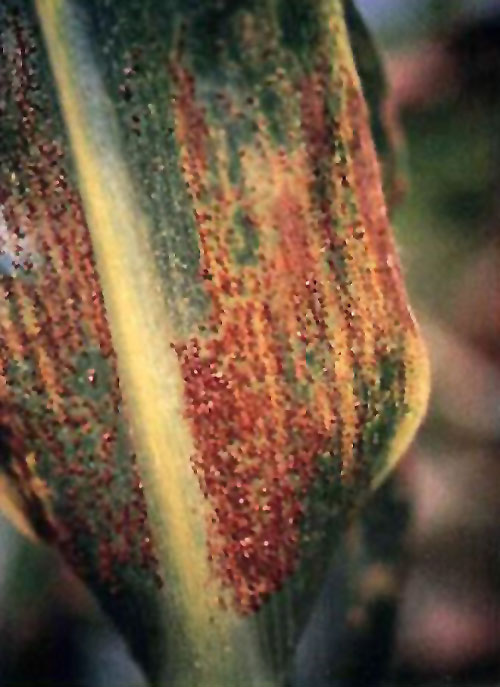Flood of 1993: Crops Overindulge
Flood of 1993
Emma Husar
5/5/1993
 In the span of a whole year in Wapello County an average of 33 inches of rain falls; in 1993, between April and August, 48 inches fell. The Raccoon and Des Moines rivers crested at 22.15 feet, breaking the Wapello County flood record. Water pouring out of the Red Rock Dam upstream from Wapello County was running “fast enough to fill 25-yard-long high school swimming pools every second”. All that water gushed into Wapello County first at Eddyville, and subsequently at Ottumwa. There, “the river has already burst through a railroad embankment, outflanking another levee, to flood the western edge of town.This neighborhood will likely stay under water for as much as a month because the 100-foot breach cannot be fixed until the waters recede,” said the assistant city administrator overseeing flood relief work, W. Alan Winders.
In the span of a whole year in Wapello County an average of 33 inches of rain falls; in 1993, between April and August, 48 inches fell. The Raccoon and Des Moines rivers crested at 22.15 feet, breaking the Wapello County flood record. Water pouring out of the Red Rock Dam upstream from Wapello County was running “fast enough to fill 25-yard-long high school swimming pools every second”. All that water gushed into Wapello County first at Eddyville, and subsequently at Ottumwa. There, “the river has already burst through a railroad embankment, outflanking another levee, to flood the western edge of town.This neighborhood will likely stay under water for as much as a month because the 100-foot breach cannot be fixed until the waters recede,” said the assistant city administrator overseeing flood relief work, W. Alan Winders.

The Ottumwa Courier looked at more than residential decimation. On May 5 they noted, “The weather is frustrating many Southern Iowa farmers.” Farmer Jim Bailey said that “15 acres of his 200-acre farm near here were under water.” Another farmer, Nioll Wilkening, recalled that, in 35 years of farming, he never experienced so harmful of a season for farmlands as in 1993. It was so bad that, by early May, he still had not planted corn. He said, “The ground is too cold and too wet.” State officials reported that 69% of Iowa’s topsoil and 80% of subsoil had excess moisture. Planting under these conditions can be very harmful to the development of the plants; however, neglecting to plant can also be detrimental to the economy.

Bill Albert, who had been farming for 34 years, was patient with the inclement weather. Albert said, “We just count our blessings and go from day to day and don’t worry about it.” Ralph Newman also was in no hurry to plant. He informed The Ottumwa Courier that “you raise two things in a mud hole: weeds and cost of production.”
It was smart to wait. After a while it was clear that the flooding in 1993 created diseased corn and soybeans, decreasing the crop yield. The average soybean yield for Iowa was 20% less than surrounding years. The flooding did not give the plants’ roots room to grow and on top of that, the boundless rainfall brought on “Brown Spot, a rain borne fungal disease that defoliated soybean leaves.” In the fall, premature defoliation (loss of leaves from the plants) from foliar diseases was prevalent, and many soybean fields turned yellow before September. Sudden death syndrome for soybeans—a fungus present in soil that first infects the roots before consuming the whole plant—was first found in Iowa in 1993.
Corn too was threatened– by Crazy Top and Corn Rusts. These two diseases occur when corn plants stand in water for a long time. Crazy Top is caused by a downy mildew fungus. Corn Rust, on the other hand, is a fungus that flies through the air and thrives on moist or wet leaves. Even a morning dew is enough to activate the fungus.
In Wapello County, where agriculture accounts for half of the income, the loss was devastating. “You lose money all the way down the chain,” said Charles Barnett, executive vice president of the Ottumwa Area Chamber of Commerce. Jobs related to Deere & Co. as well as corn processing plants in Eddyville were threatened and many lost, as were innumerable acres of farmland. According to the Washington Post, “The interdependent members of the Wapello County farm economy agree: 1993 is too wet.”
